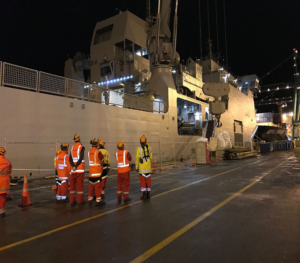Just after midnight on Sunday 14 November 2016, a magnitude 7.8 earthquake lasting around 2 minutes struck just outside Kaikoura. […]
Just after midnight on Sunday 14 November 2016, a magnitude 7.8 earthquake lasting around 2 minutes struck just outside Kaikoura. The effects of this event are still being felt around Wellington.
With the anniversary coming around so quickly (it seems), this has been very topical around the CSI office of late; many of the questions posed relate to what we have learned and how quickly we have moved to make our capital safer. As always, CSI believe that money is often the driver to hold-ups in the progress of building upgrades.
Finding the solutions to this challenge is a major concern and not easily done. The Wellington City Council (WCC) is currently considering various options.
Recently the issue of Unreinforced Masonry (URM) being a risk to high-traffic areas in Wellington has opened the debate in WCC as to what kind of loans could be offered to urgently secure the masonry, subsequent to the previous round of URM funding as this recent “Stuff” article discusses.

Queensgate building in Lower Hutt, one of the many buildings damaged.
Online we found a list of structures of concern around the Wellington region (scroll to the Casualties and Damage section of this Wikipedia post). This entry highlights just how severely Wellington’s buildings and infrastructure were affected; most of which should have performed better!
“The Wellington City Council was given special powers to require reports from building owners, and there were doubts about the application of the rules.” (wiki/2016_Kaikoura_earthquake)
There is a lot of debate about the value of New Building Standard (NBS) as a rating for building safety. It appears to be a very subjective rating. This has a flow on effect not only for the actual safety of our structures but also for success in re-financing, insurance etc. required by building owners.
This re-financing and insurance is essential for building owners to be able to upgrade their assets. As we now know, damage from the Kaikoura Earthquake would have been much greater in Wellington had it been centered closer to the city. For instance, the Kaikoura earthquake magnitude 7.8 (14.11.16) was 31.6x bigger than the Christchurch (22.02.11) earthquake magnitude 6.3 but the Christchurch earthquake was centered only 10 km’s from the City Centre (in Lyttelton).

Damage to the Wellington docks, halted container shipping for 10 months.
Unfortunately, as we cannot control the location of earthquakes we need to be prepared for any eventuality – and getting people out of buildings safely is the priority.
If money were available it would be possible, through non-destructive testing, to more precisely target the retrofit of buildings and infrastructure.
It seems that the consequences of not completing upgrades are too severe. Even in terms of future spending, to have another round of underperforming buildings would sky-rocket the costs already faced in the region.
One way or another we need to complete comprehensive checks and subsequent upgrades as soon as possible.
Wanting to find out more about innovative structural integrity testing? Get in touch with CSI at www.csiscan.nz or phone 0800 33 7767. Winners of the 2016 Wellington Gold Awards in Emerging Services and finalists in the Deloitte’s Fast 50 ‘rising star’ competition 2017.
Leave a Reply
You must be logged in to post a comment.